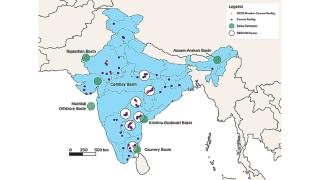Composite cements are clinker efficient and play an important role in reducing CO2 emissions from cement manufacturing. To assure their correct application in concrete, their performance in concrete has to be demonstrated, especially with regard to durability under different concrete exposure conditions. As part of a long-term research programme, such cements made of different calcined clays were used in conventional concrete mixtures and tested for their resistance to carbonation, chloride migration, frost and frost-de-icing salts. By Roland Pierkes, Simone E Schulze & Joerg Rickert, VDZ, Germany.
Clays and in particular calcined clays have long been known as building materials. While suitable clays are available worldwide in large quantities, they show strong differences in composition and regional availability. For example, Europe has a tradition in using calcined clays in cement and the current European cement standard EN 197-1 provides for calcined clays as a main constituent (Q) in cement. The use of suitable clays depends on the clay’s quality and availability. Unfortunately, since high-quality clays such as pure kaolinitic and illitic ones are limited in regional availability and/or used for other purposes than cement making, the market share of these respective cements is low in Europe (2016: ~2.5 per cent of CEM IV, including Q, D, P, V, W).
